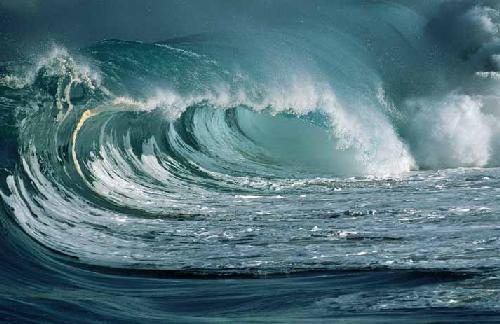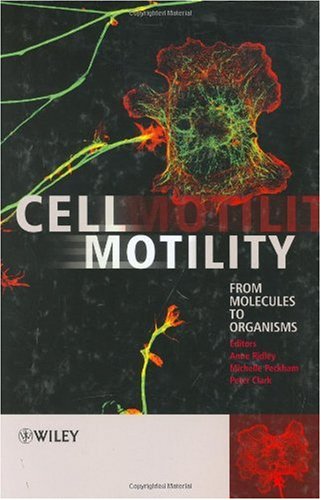Daniel A. Beard, Hong Qian0521870704, 9780521870702
Table of contents :
Cover……Page 1
Half-title……Page 3
Series-title……Page 7
Title……Page 9
Copyright……Page 10
Dedication……Page 11
Contents……Page 13
Preface……Page 19
Computational biology……Page 21
Systems biology……Page 22
Organization of this book……Page 23
Part I Background material……Page 25
1.1 Macroscopic thermodynamics……Page 27
1.2 Isolated systems and the Boltzmann definition of entropy……Page 29
1.3.1 Helmholtz free energy……Page 30
1.3.3 Interpretation of temperature in the NVT system……Page 33
1.4.1 Gibbs free energy……Page 34
1.5 Thermodynamic driving forces in different systems……Page 35
1.6.1 Systems of non-interacting molecules……Page 36
1.6.2 Gibbs free energy of chemical reactions and chemical equilibrium……Page 37
1.7.1 Enzyme reaction mechanisms……Page 39
1.7.2 Electrostatic potential across a cell membrane……Page 41
Concluding remarks……Page 42
Exercises……Page 43
2.1 Conventional notation in biochemical thermodynamics……Page 44
2.2.1 An example of a biochemical reactant……Page 46
2.2.2 An example of a biochemical reaction……Page 48
2.3 Effects of pH and ion binding on biochemical reaction thermodynamics……Page 52
2.4 Effects of temperature on biochemical reaction thermodynamics……Page 54
2.5 Effects of ionic strength on biochemical reaction thermodynamics……Page 55
2.6 Treatment of CO2 in biochemical reactions……Page 56
2.7.2 The bicarbonate system in vivo……Page 58
Exercises……Page 59
Overview……Page 61
3.1.1 Differential equations from mass conservation……Page 62
3.1.2 Reaction thermodynamics revisited……Page 63
3.1.3.1 Mass action kinetics……Page 65
3.1.3.2 Complex rate laws……Page 68
3.1.3.3 Net flux for nearly irreversible reactions is proportional to reverse flux……Page 71
3.1.4.1 Example: simulating Michaelis–Menten enzyme kinetics……Page 73
3.1.4.2 Example: non-linear oscillations in glycolysis……Page 75
3.2 Transport processes……Page 78
3.2.1 Advection……Page 79
3.2.3 Drift……Page 80
3.2.4 Example: passive permeation across a membrane……Page 81
3.2.5 Example: coupled diffusion and drift in a membrane……Page 82
Exercises……Page 84
Part II Analysis and modeling of biochemical systems……Page 87
Overview……Page 89
4.1.1 Steady state enzyme turnover kinetics……Page 90
4.1.2 Reversible Michaelis–Menten kinetics……Page 93
4.1.3 Non-equilibrium steady states and cycle kinetics……Page 94
4.2.1 Rapid pre-equilibrium……Page 96
4.2.2 A singular perturbation approach to Michaelis–Menten kinetics……Page 98
4.3.1 Sigmoidal equilibrium binding……Page 101
4.3.2 Cooperativity in enzyme kinetics……Page 102
4.3.3 The Hill coefficient……Page 103
4.3.4 Delays and hysteresis in transient kinetics……Page 104
4.4 Enzymatic fluxes with more complex kinetics……Page 106
4.4.1 Reciprocal of flux: the mean time of turnover……Page 107
4.4.2 The method of King and Altman……Page 109
4.4.3 Enzyme-catalyzed bimolecular reactions……Page 112
4.4.4 Example: enzyme kinetics of citrate synthase……Page 116
Exercises……Page 124
5.1 Kinetic theory of the biochemical switch……Page 125
5.1.1 The phosphorylation–dephosphorylation cycle……Page 128
5.1.2 Zeroth-Order Ultrasensitivity……Page 131
5.1.3 Substrate selectivity……Page 133
5.1.4 The GTPase signaling module……Page 135
5.1.5 Duration of switch activation and a biochemical timer……Page 137
5.1.6 Synergistic action of kinases and phosphatases and the phosphorylation energy hypothesis……Page 141
5.2.1 Gene regulatory networks and the repressilator……Page 142
5.2.2 Biochemical oscillations in cell biology……Page 145
Concluding remarks……Page 146
Exercises……Page 147
6 Biochemical reaction networks……Page 148
6.1.1 Establishing the components of the biochemical network model……Page 149
6.1.2 Determining expressions for biochemical fluxes for the reactions……Page 151
6.1.3 Determining the differential equations……Page 152
6.1.4 Computational implementation and testing……Page 157
6.2.2 Components of the TCA cycle reaction network……Page 160
6.2.3 Flux expressions for TCA cycle reaction network……Page 163
6.2.4 Differential equations for TCA cycle reaction network……Page 172
6.2.5 Simulation of TCA cycle kinetics……Page 173
6.3 Control and stability in biochemical networks……Page 175
6.3.1 Linear analysis near a steady state……Page 176
6.3.2.1 Elasticity coefficients……Page 177
6.3.2.2 Control coefficients……Page 178
6.3.2.3 Summation theorems……Page 179
Concluding remarks……Page 180
Exercises……Page 181
7.1 Transporters……Page 182
7.1.2 Examples: a uniporter and an antiporter……Page 183
7.2.1 Thermodynamics of charged species transport……Page 188
7.2.2 Electrogenic transporters……Page 190
7.3.1 Ion channels……Page 192
7.3.2 Differential equations for membrane potential……Page 193
7.3.3 The Hodgkin–Huxley model……Page 194
7.4 Large-scale example: model of oxidative ATP synthesis……Page 198
7.4.1 Model of oxidative phosphorylation……Page 200
7.4.2 Model behavior……Page 207
7.4.3 Applications to in vivo systems……Page 208
Concluding remarks……Page 210
Exercises……Page 211
Part III Special topics……Page 213
8.1 Diffusion-driven transport of solutes in cells and tissue……Page 215
8.1.1 The diffusion equation: assumptions and applications……Page 216
8.1.2 Oxygen transport to tissue and the Krogh–Erlang model……Page 217
8.1.3 Facilitated diffusion……Page 223
8.2 Advection–diffusion modeling of solute transport in tissues……Page 229
8.2.1 Axially distributed models of blood–tissue exchange……Page 231
8.2.2 Analysis of solute transport in organs……Page 234
Concluding remarks……Page 236
Exercises……Page 239
9 Constraint-based analysis of biochemical systems……Page 240
9.2.1 Mathematical representation for flux balance analysis……Page 241
9.2.2 Energy metabolism in E. coli……Page 243
9.3 Thermodynamic constraints……Page 247
9.3.1 The basic idea……Page 248
9.3.2 Mathematical details……Page 250
9.3.3 Feasible sign patterns……Page 252
9.4.1 Feasible concentrations from potentials……Page 254
9.4.3 Conserved metabolite pools……Page 255
9.4.4 Biological objective functions and optimization……Page 256
Concluding remarks……Page 258
Exercises……Page 259
10 Biomacromolecular structure and molecular association……Page 260
10.1 Protein structures and -helices……Page 261
10.1.1 The theory of helix-coil transition……Page 262
10.2 Protein filaments and actin polymerization……Page 268
10.2.1 Nucleation and critical monomer concentration……Page 269
10.2.2 Theory of nucleation-elongation of actin polymerization……Page 270
10.3.1 A combinatorial theory of macromolecular association……Page 272
10.3.2 Statistical thermodynamics of association……Page 276
10.4 A dynamics theory of association……Page 277
Concluding remarks……Page 279
Exercises……Page 280
11 Stochastic biochemical systems and the chemical master equation……Page 281
11.1 A brief introduction to the chemical master equation……Page 282
11.2.2 Continuous time Markov chain……Page 285
11.3.1 Rate equations for two-state conformational change……Page 287
11.3.2 Michaelis–Menten kinetics of single enzymes……Page 290
11.4.1 Chemical master equation for Michaelis–Menten kinetics……Page 291
11.4.2 A non-linear biochemical reaction system with concentration fluctuations……Page 293
11.4.4 Stochastic simulation of the CME……Page 296
11.5 The CME model for protein synthesis in a single cell……Page 298
Concluding remarks……Page 300
Exercises……Page 301
12.1 The NVE ensemble……Page 302
12.2.1 Boltzmann statistics and the canonical partition function: a derivation……Page 307
12.2.2 Another derivation……Page 308
12.2.3 One more derivation……Page 309
12.2.4 Equipartition……Page 311
12.3 The NPT ensemble……Page 313
Bibliography……Page 316
Index……Page 327







Reviews
There are no reviews yet.